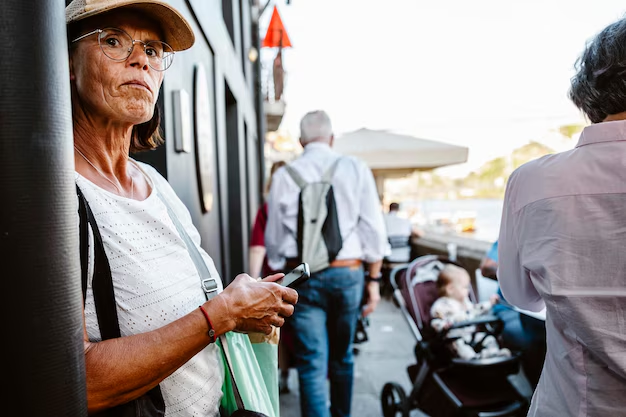Are There Actually Special Officers for Senior Citizens in Cars?
When discussing safety and support services for senior citizens, a unique question often arises: Are there really special officers dedicated to assisting seniors in cars? This intriguing inquiry reflects broader concerns about mobility, independence, and safety for older adults. As we explore this topic, we'll uncover the truth about such roles, delve into related support mechanisms, and offer guidance that empowers seniors to navigate the roads with confidence.
Understanding the Concept of Special Officers for Seniors
At its core, the notion of "special officers" for senior citizens implies the presence of designated personnel focused exclusively on assisting older adults in vehicular contexts. However, does such a role tangibly exist in practice?
Reality Check: Do Special Officers Exist?
While certain jurisdictions might have programs or officers designated to support seniors, the idea of an officer who solely caters to senior citizens in cars as their primary duty is not universally implemented. In some regions, police departments or community organizations allocate resources to ensure general senior safety, sometimes involving tailored crime prevention units, but these do not typically extend specifically to vehicular matters.
Public Safety Initiatives
Instead of dedicated officers, many areas approach senior safety through broader initiatives:
- Community Education Programs: These focus on safe driving practices tailored for senior citizens.
- Voluntary License Review Programs: Available in many places, these programs encourage seniors to self-assess and discuss their driving abilities with professionals or family.
Drivers of the Special Officer Concept
Although the dedicated role of special officers for seniors in cars may not be common, the idea stems from genuine concerns and needs.
Safety Considerations for Older Drivers
Aging and Driving: As individuals age, natural changes can affect driving abilities, such as slower reaction times, vision limitations, or reduced flexibility. This raises concerns about safely operating a vehicle.
- Understanding Limitations: Part of ensuring safety on the road involves a candid assessment of one's physical and cognitive abilities.
- Adaptations and Aids: Many technologies and vehicle adaptations can support senior drivers, enhancing their safety and independence.
The Importance of Mobility for Seniors
Maintaining the ability to drive plays a crucial role in sustaining independence and quality of life for many seniors. This makes it imperative to find ways to support their driving needs safely.
- Social Connections: The ability to drive enables seniors to maintain social ties, contributing to mental and emotional well-being.
- Access to Necessities: Driving ensures access to essential services and goods, such as medical appointments and grocery shopping.
Alternative Support Mechanisms
While dedicated officers may be rare, there exist various support options and resources that aim to address older adults' needs on the roads.
Local Community Resources
Many communities offer programs and services designed to assist older adults:
- Transportation Services: Public and private services provide seniors with transportation options to maintain their independence.
- Driving Refresher Courses: These are tailored to help seniors brush up on their driving skills and learn about age-related adaptations.
Technological Aids
Technology continues to play a vital role in enhancing safety and ease for senior drivers:
- Advanced Driver-Assistance Systems (ADAS): Features like collision avoidance, blind-spot monitoring, and adaptive cruise control have become valuable aids.
- GPS and Navigation Tools: Simplified interfaces and voice commands make navigation more accessible for seniors.
Key Takeaways and Actionable Tips
Let's summarize the crucial insights about senior citizens and vehicular safety:
- There is no universal presence of special officers exclusively for seniors in cars. However, various programs and community initiatives aim to enhance senior safety.
- Regular self-assessment of driving abilities is important for safety—consider professional evaluations if concerns arise.
- Explore vehicle adaptations and technological aids that can support safe driving.
- Take advantage of community transportation services and educational programs specific to seniors.
♻️ Summary of Practical Tips
🔹 Regular Screenings: Engage in periodic eye examinations and health check-ups to ensure fitness to drive.
🔹 Safety Features: Leverage vehicle safety technologies to enhance driving capabilities and reduce risk.
🔹 Education: Participate in driving courses for seniors that offer personalized advice and practical skills.
🔹 Community Connections: Research local resources that provide transportation and support services tailored for seniors.
Expanding the Discussion
Understanding that "special officers for seniors in cars" mainly refers to broader safety concerns rather than dedicated roles allows us to better utilize existing resources and navigate related issues.
Policy and Advocacy
The evolving conversation around senior drivers continues to inform public policy and advocacy efforts:
- Policy Enhancements: Advocating for policies that support senior-friendly infrastructure and services remains vital.
- Community Engagement: Involvement in local community groups dedicated to senior issues can drive change and improvements in available services.
Personal Planning and Preparedness
Planning and being prepared can make all the difference:
- Create a Mobility Plan: Evaluate current and future transportation needs and plan accordingly.
- Communicate: Discuss any concerns with family members or healthcare providers for additional support and advice.
Closing Insights
The conversation about senior citizens and vehicular safety is crucial for ensuring a high quality of life as one ages. While specific officers dedicated solely to senior citizens on cars may not widely exist, ingenuity, technology, and community services provide meaningful support that empowers senior drivers. By being proactive, utilizing available resources, and embracing an adaptable mindset, seniors can continue to enjoy the freedom and independence that comes with driving.

Related Topics
- a Haiku For a Graduating Senior
- a Senior Citizen Id Card Is Valid For 10 Years.
- Are Edibles Safe For Seniors
- Are Keto Gummies Safe For Seniors
- Are Keto Pills Safe For Seniors
- Are There Any Federal Programs For Seniors To Get Internet
- Are There Really Zero Premium Drug Plans For Seniors
- Are Yak Chews God For Senior Dogs
- Can Opener For Seniors
- Can Openers For Seniors